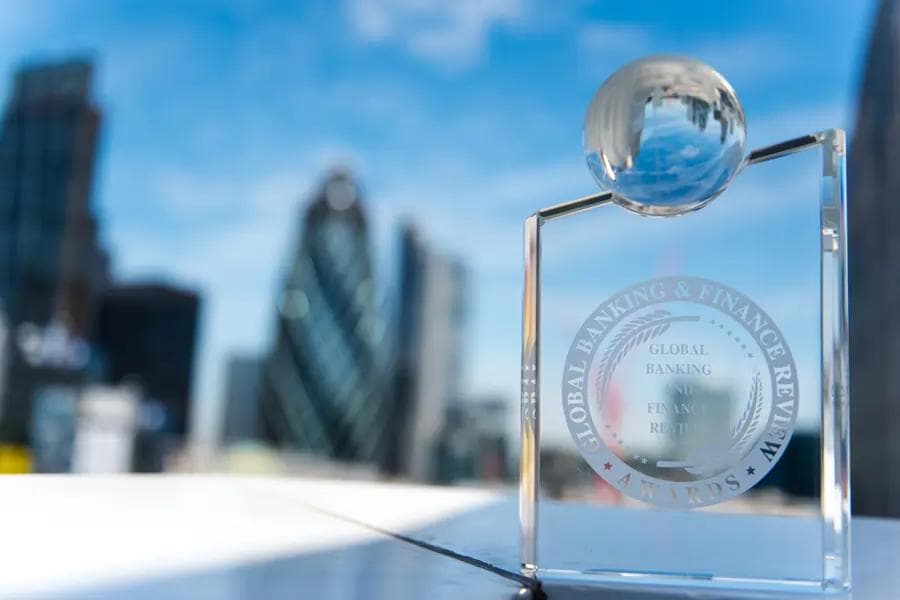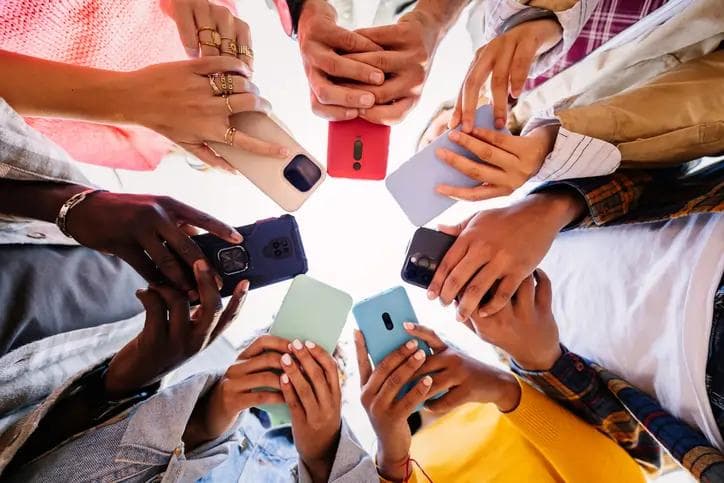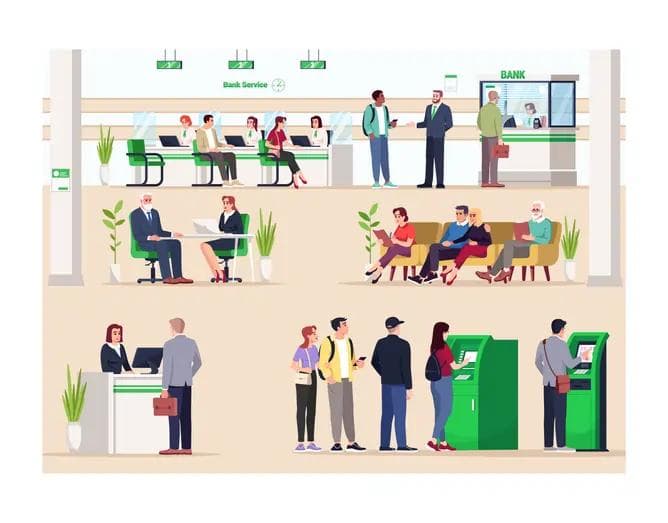LIKE YOUR BANK, HATE THE REST
LIKE YOUR BANK, HATE THE REST
Published by Gbaf News
Posted on June 14, 2017

Published by Gbaf News
Posted on June 14, 2017

Collectively we think that big banks are rubbish. Although personally, we’re generally happy with the service we receive from our own bank. Mark Chamberlain, Sector Managing Director for Services, Retail and Transformation Brands at Kantar Millward Brown, explains the branding gap.
Survey after survey tells us that consumers hate the big banks. And they, or we, hate the biggest global banks most of all.
The blame for the financial crash in 2008 still lies with the biggest banks in the eyes of many consumers. Everytime concern is raised about the continued stability of the global financial system, bankers’ bonuses or salaries,then consumer antipathy gets refreshed.
A big consequence of this is that the brands of the big global and regional banks continue to suffer in the BrandZ 2016 Top 100 Most Valuable Brands 2016 ranking. Last year global banks lost 11% of their brand value and regional banks fell 12%.
A weak brand might seem like a small thing for these financial giants to bear, but poor ratings like these can hold back even the biggest company and stop them reaching their potential.
In addition, brand matters more to banks because their brands have historically been weaker than we see in sectors such as technology, meaning that they have no reservoir of brand love to fall back on.
Indeed, the latest BrandZ data analysis shows just how much impact a poor brand is having on business prospects in the home markets of key banking brands – environments where these banks ought to do best, given the local pride, jobs and economic boost they provide.
Even assuming that brands benefit from goodwill in their home markets, however, they still do less well than you would expect. On Brand Potential – a measure of probability of short-term growth –Deutsche and key competitors Barclays, HSBC, Santander and Citi all perform worse than the average brand in their home markets.
In part, this poor score also reflects the split that exists within these banks – the battle to be business titans vs the desire to serve the public and customers. Analysis shows that Deutsche Bank’s Business Power – a measure of brand strength – indexes 309, compared to 85 for its Consumer Power, for example.
Unfortunately for the banks, this brand challenge coincides with a time when legacy brands are facing more competition than ever before. Fintech players and new banks are being encouraged to take share and have the technology to provide a better, more seamless experience for consumers.
The playing field of alternatives to big traditional banks has never been broader, ranging from challenger banks such as Monzo and Atom and other fintech players that are encroaching on their services (such as TransferWise and Revolut for payment transfers).
The saving grace, however, is that while consumers consistently slate banks as a group, their personal view of their own bank tends to be a little more positive. Even where there is widespread discussion of trust and reputation issues, people rate their own banka bit more highly than the sector as a whole.
Perhaps that is still a hangover from the days of personal contact with experienced finance staff in branch. As banks continue to close branches and de-skill frontline staff, maintaining that personal link is vital and banks must do all they can to ensure the customer experience is seamless and easy- whether they use an app, go online or visit the high-street branches that are left.
For example, consumers increasingly expect their bank to call if they see unusual activity on their account.A good example is South Africa’s Absa Bank, currently a division of Barclays Africa, which is using historical transactional data to understand and engage with its customers. Absa has piloted a predictive service that alerts customers when they’re at risk of overdrawing their account, based on their specific habits and payment obligations. It also offers personalised options such as speaking to an advisor. Almost a third of alerts sent in the pilot resulted in product applications, while 60% of customers took action to manage their finances better.
Big banks need to compete with the seamless experience offered by rivals. PayPal is an exceptional performer in this area, making the purchase process easy by eliminating the need for shoppers to input their card or bank details. Technology giant Tencent, meanwhile, has made it possible to send money through its popular WeChat messaging platform.
Ultimately, performing well on key brand measures such as convenience and acting as a “bank that really serves my needs” will help to insulate the consumer business of the big banking brands from the impact of a poor wider brand perception.
In the short term, big banks seem relatively safe because only a small number of consumers actually change banks. Switching hasn’t been at the level that many would expect, particularly in the UK, where lots of effort has been put into making it easier and faster.
In fact, most UK switching can generally be traced to tactical promotions, particularly those run by Santander. The truth is that the impact of trust and reputational issues only hits most consumers if there’s news that directly affects their personal bank.
All of which explains why the Fintech specialists and the new banking brands have been more of a slow burn. In the long-term however, they are ones to watch. That’s not just because they are better placed to move faster to deliver the service that new technology permits but also because they are attracting new-to-banking customers more effectively than other groups.
In fact, their limited range of products, often a savings account, a current account and online banking apps, means they are better placed to attract such consumers who are in the market for the first time and have relatively simple needs.
These, mostly millennial, consumers are also more open to new brands. They will research stuff online, and use comparison sites – which are driving more informed brand choices, changing the competitive set and giving visibility to disruptor brands that customers may not otherwise have seen.
The opportunity for some of these new players is almost to apply their service ethos to become a vetting service for additional offerings, recommending products as and when their customers might reach the appropriate stage in their financial journey.
All this might lead you to think that brands can ditch traditional activity such as
Deutsche Bank’s sports sponsorships such as PGA Golf Events and World Equestrian Festival as well as its more local efforts such as planting trees in Frankfurt.
The argument being that if they simply focus on the brand touchpoints they will keep their existing customer base.
Not so, because these efforts are also part of the process of reaching out and are particularly important at a local level to reinforce the sense that my bank supports the things that matter to me. Sponsorships for the things we love create a greater closeness to the brand.
The legacy of the 2008 financial crisis is still sticking to global and regional banks. To sustain their relevance and long-term value, they need to recalibrate and deliver a compelling brand experience. If they can do this, the trust they’re chasing so hard will return. If they don’t, the mud will continue to stick.
Collectively we think that big banks are rubbish. Although personally, we’re generally happy with the service we receive from our own bank. Mark Chamberlain, Sector Managing Director for Services, Retail and Transformation Brands at Kantar Millward Brown, explains the branding gap.
Survey after survey tells us that consumers hate the big banks. And they, or we, hate the biggest global banks most of all.
The blame for the financial crash in 2008 still lies with the biggest banks in the eyes of many consumers. Everytime concern is raised about the continued stability of the global financial system, bankers’ bonuses or salaries,then consumer antipathy gets refreshed.
A big consequence of this is that the brands of the big global and regional banks continue to suffer in the BrandZ 2016 Top 100 Most Valuable Brands 2016 ranking. Last year global banks lost 11% of their brand value and regional banks fell 12%.
A weak brand might seem like a small thing for these financial giants to bear, but poor ratings like these can hold back even the biggest company and stop them reaching their potential.
In addition, brand matters more to banks because their brands have historically been weaker than we see in sectors such as technology, meaning that they have no reservoir of brand love to fall back on.
Indeed, the latest BrandZ data analysis shows just how much impact a poor brand is having on business prospects in the home markets of key banking brands – environments where these banks ought to do best, given the local pride, jobs and economic boost they provide.
Even assuming that brands benefit from goodwill in their home markets, however, they still do less well than you would expect. On Brand Potential – a measure of probability of short-term growth –Deutsche and key competitors Barclays, HSBC, Santander and Citi all perform worse than the average brand in their home markets.
In part, this poor score also reflects the split that exists within these banks – the battle to be business titans vs the desire to serve the public and customers. Analysis shows that Deutsche Bank’s Business Power – a measure of brand strength – indexes 309, compared to 85 for its Consumer Power, for example.
Unfortunately for the banks, this brand challenge coincides with a time when legacy brands are facing more competition than ever before. Fintech players and new banks are being encouraged to take share and have the technology to provide a better, more seamless experience for consumers.
The playing field of alternatives to big traditional banks has never been broader, ranging from challenger banks such as Monzo and Atom and other fintech players that are encroaching on their services (such as TransferWise and Revolut for payment transfers).
The saving grace, however, is that while consumers consistently slate banks as a group, their personal view of their own bank tends to be a little more positive. Even where there is widespread discussion of trust and reputation issues, people rate their own banka bit more highly than the sector as a whole.
Perhaps that is still a hangover from the days of personal contact with experienced finance staff in branch. As banks continue to close branches and de-skill frontline staff, maintaining that personal link is vital and banks must do all they can to ensure the customer experience is seamless and easy- whether they use an app, go online or visit the high-street branches that are left.
For example, consumers increasingly expect their bank to call if they see unusual activity on their account.A good example is South Africa’s Absa Bank, currently a division of Barclays Africa, which is using historical transactional data to understand and engage with its customers. Absa has piloted a predictive service that alerts customers when they’re at risk of overdrawing their account, based on their specific habits and payment obligations. It also offers personalised options such as speaking to an advisor. Almost a third of alerts sent in the pilot resulted in product applications, while 60% of customers took action to manage their finances better.
Big banks need to compete with the seamless experience offered by rivals. PayPal is an exceptional performer in this area, making the purchase process easy by eliminating the need for shoppers to input their card or bank details. Technology giant Tencent, meanwhile, has made it possible to send money through its popular WeChat messaging platform.
Ultimately, performing well on key brand measures such as convenience and acting as a “bank that really serves my needs” will help to insulate the consumer business of the big banking brands from the impact of a poor wider brand perception.
In the short term, big banks seem relatively safe because only a small number of consumers actually change banks. Switching hasn’t been at the level that many would expect, particularly in the UK, where lots of effort has been put into making it easier and faster.
In fact, most UK switching can generally be traced to tactical promotions, particularly those run by Santander. The truth is that the impact of trust and reputational issues only hits most consumers if there’s news that directly affects their personal bank.
All of which explains why the Fintech specialists and the new banking brands have been more of a slow burn. In the long-term however, they are ones to watch. That’s not just because they are better placed to move faster to deliver the service that new technology permits but also because they are attracting new-to-banking customers more effectively than other groups.
In fact, their limited range of products, often a savings account, a current account and online banking apps, means they are better placed to attract such consumers who are in the market for the first time and have relatively simple needs.
These, mostly millennial, consumers are also more open to new brands. They will research stuff online, and use comparison sites – which are driving more informed brand choices, changing the competitive set and giving visibility to disruptor brands that customers may not otherwise have seen.
The opportunity for some of these new players is almost to apply their service ethos to become a vetting service for additional offerings, recommending products as and when their customers might reach the appropriate stage in their financial journey.
All this might lead you to think that brands can ditch traditional activity such as
Deutsche Bank’s sports sponsorships such as PGA Golf Events and World Equestrian Festival as well as its more local efforts such as planting trees in Frankfurt.
The argument being that if they simply focus on the brand touchpoints they will keep their existing customer base.
Not so, because these efforts are also part of the process of reaching out and are particularly important at a local level to reinforce the sense that my bank supports the things that matter to me. Sponsorships for the things we love create a greater closeness to the brand.
The legacy of the 2008 financial crisis is still sticking to global and regional banks. To sustain their relevance and long-term value, they need to recalibrate and deliver a compelling brand experience. If they can do this, the trust they’re chasing so hard will return. If they don’t, the mud will continue to stick.
Explore more articles in the Banking category











